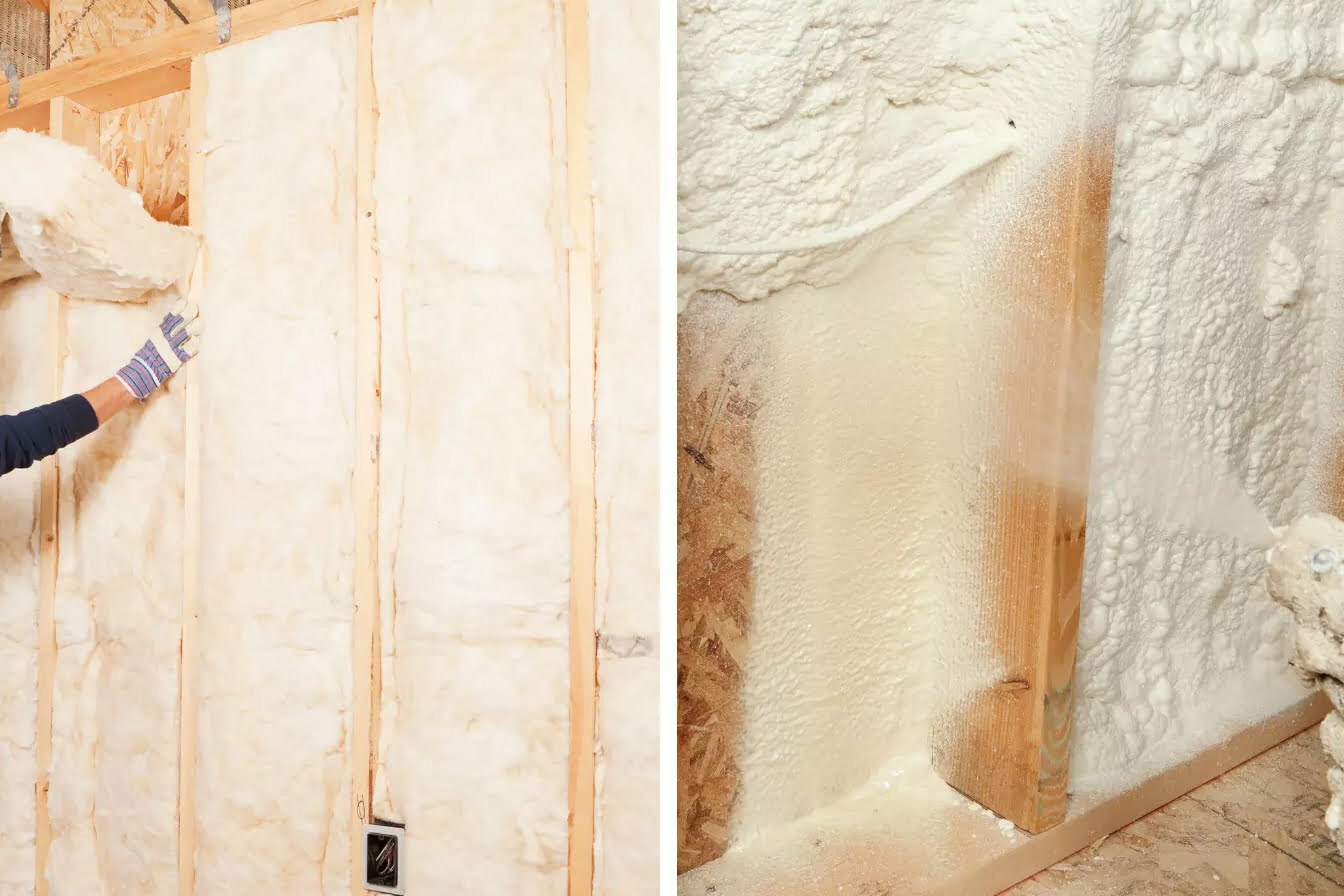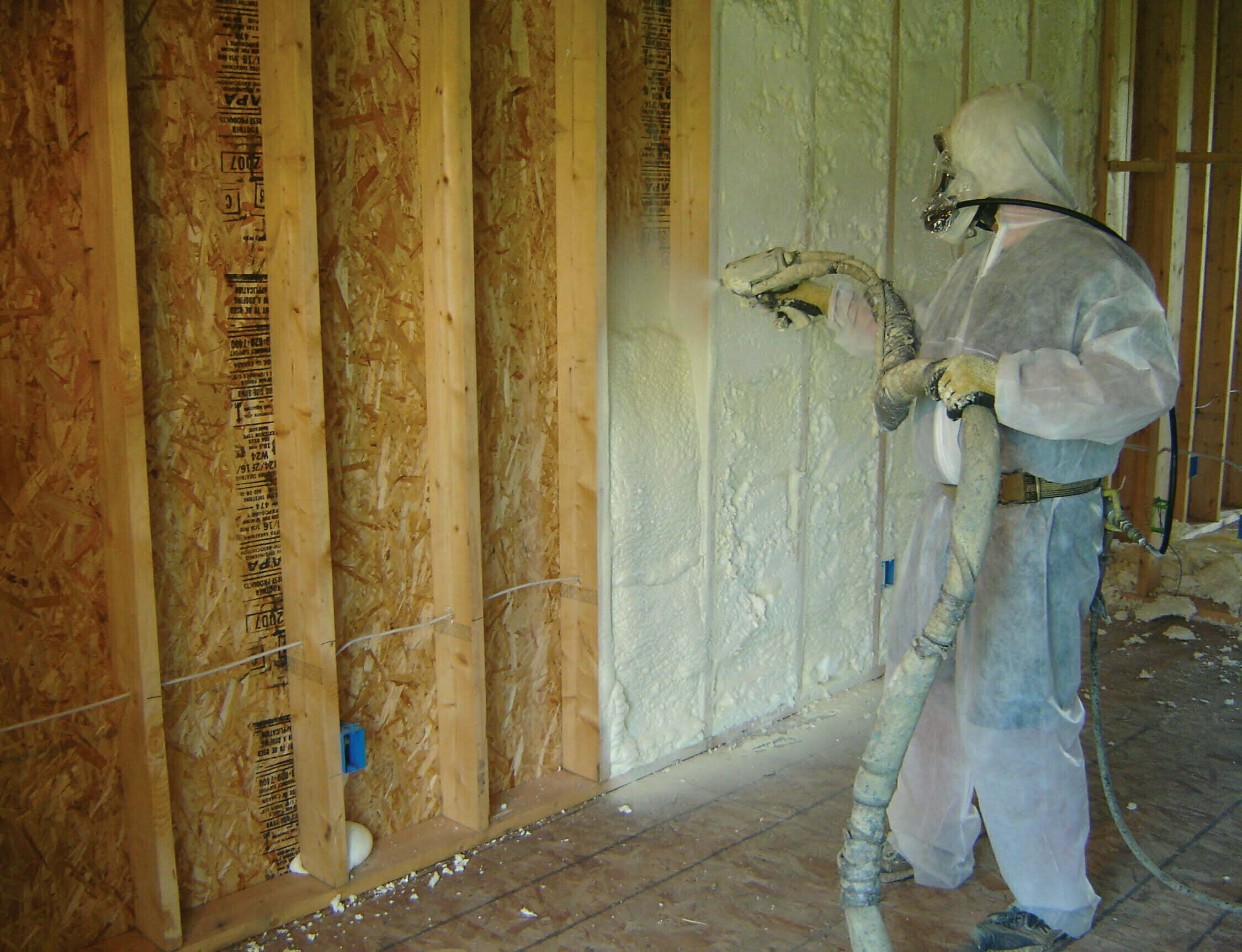When it comes time to insulate a new or existing home, two of the most common options homeowners consider are spray foam insulation and fiberglass insulation. Both provide thermal protection and energy savings, but spray foam delivers significantly higher performance overall. Understanding the pros and cons of these two major insulation materials can help you determine which is the better fit for your home improvement project.
Understanding the Basics of Insulation
Before diving into a comparison, it’s helpful to dive into some insulation fundamentals. Let’s cover the basics for evaluating spray foam vs fiberglass.
What is Insulation?
Insulation is any material used to slow heat loss or gain in a building. It creates resistance to conductive, convective, and radiant heat transfer.
The better an insulation material resists this heat flow, the higher its insulating value and ability to maintain comfortable indoor temperatures.
Primary Types: Spray Foam and Fiberglass
Two of the most common modern insulation materials are spray polyurethane foam and fiberglass batt or blanket insulation.
Spray foam insulation starts as a liquid and then expands and hardens to form a rigid foam barrier. Fiberglass insulation consists of small glass fibers bound together with plastic binders.
The Functionality and Need for Insulation
Insulation allows buildings to use less energy for heating and cooling. It also controls moisture and improves noise reduction.
Improving insulation levels is one of the most impactful upgrades for enhancing energy efficiency and comfort in the home.
Overview of Spray Foam Insulation
Now that the basics are covered let’s examine details about spray foam insulation specifically.
Spray foam insulation is a type of insulation that is applied on-site using specialized spraying equipment. It starts as a liquid mixture of polyurethane chemicals that react and expand when sprayed onto surfaces, expanding 30 to 60 times its original volume as it cures into rigid foam insulation.
There are two main types of spray foam insulation – open-cell and closed-cell. Open-cell spray foam has a lower density and R-value (insulation value) of around R-3.5 per inch. The open cell structure allows for airflow and is more flexible when cured. Closed-cell spray foam has a higher density and higher R-value of around R-7.4 per inch. The closed cell structure makes it more rigid and provides a stronger moisture barrier.
Spray foam insulation provides superior air sealing and insulation compared to traditional fiberglass batts and insulation. It can fill cracks, gaps, and voids, creating an air-tight seal that prevents drafts and improves energy efficiency. As it expands and fills space, it adheres tightly to surfaces blocking moisture and airflow.
Advantages of Spray Foam Insulation:
The main benefits of spray foam insulation include:
- High insulating value – can reduce heating and cooling costs
- Air sealing capability – blocks drafts, moisture, pests
- Long lasting – does not degrade over time
- Mold resistant
- Noise reduction
Disadvantages of Spray Foam Insulation:
The main downsides are higher cost compared to other insulations and the need for professional installation. Overall, spray foam is an excellent insulation solution for both new construction and retrofitting existing homes and buildings when proper climate control and efficiency are priorities. The tight air seal and high insulation value make it stand out from traditional fiberglass or cellulose insulation.
Overview of Fiberglass Insulation
What is Fiberglass Insulation?
Fiberglass insulation is made from extremely fine glass fibers bound together by plastic or resin. The main types are rolled batt insulation, loose-fill blown-in insulation, and rigid fiberglass boards.
For homes, batt insulation or blown-in loose-fill fiberglass are typical. Blown-in fiberglass uses pneumatic equipment to spray loose fiberglass pieces into wall cavities and attics. Fiberglass contains microscopic air pockets that provide the insulating value.
Advantages of Fiberglass Insulation
Benefits of fiberglass insulation:
- Low cost and widespread availability
- Provides R-values from R-3 to R-4 per inch
- Won’t absorb moisture if properly installed
- Fiberglass batts are easy for DIY installation
- Blown-in fiberglass can reach spaces batts can’t
Disadvantages of Fiberglass Insulation
Potential drawbacks include:
- Not an effective air barrier for sealing gaps
- Prone to settling and losing R-value over time
- Glass fibers can be irritating
- No structural reinforcing
- Lower R-value than some other insulations
Overall, fiberglass insulation is an affordable insulation option. But air leaks, settling, lower R-values, and potential irritation from fibers are downsides. Proper installation is key. Blown-in fiberglass gives better coverage than batts alone. Fiberglass works best coupled with air sealing techniques.
Spray Foam vs Fiberglass: A Comparative Analysis
Evaluating how fiberglass stacks up directly against spray foam insulation on key factors paints a clear picture of their differences.
Cost Comparison between Spray Foam and Fiberglass
Fiberglass insulation typically costs less upfront per square foot installed than spray foam. However, the labor savings and long-term energy savings with spray foam can provide a complete payback on the investment difference within 5-10 years.
Efficiency and Performance: Spray Foam vs. Fiberglass
Spray foam substantially outperforms fiberglass in thermal efficiency and air sealing:
- 50% higher R-value per inch
- Air-tight barrier reducing leaks up to 50%
- Maintains insulation value for the life of the home
Fiberglass simply cannot match spray foam’s performance results. Consider the R-value of and insulation after it has been submersed in water or as a 20-mile-per-hour wind blows through it. In either of these scenarios, the R-value of fiber insulations goes to zero. But, those same conditions barely affect solid foam insulations.
Environmental Factors and Safety Concerns
Both insulation types use low-VOC materials these days. Spray foam is more resistant to mold and pests than fiberglass.
Spray foam can also better protect against smoke and pollutants when properly installed. On fire safety, installers must follow code requirements carefully for either insulation.
Deciding Between Spray Foam and Fiberglass Insulation
When choosing which insulation fits your home best, here are key considerations:
Considerations for Choosing the Best Insulation Material
- Budget: upfront cost plus projected energy savings
- Performance needs: R-value, air sealing, moisture resistance
- Project scope: walls, attic, or entire structure?
Why Spray Foam is the Better Option
For any project where higher performance is needed, spray foam is the superior choice over fiberglass:
- Highest possible R-values and air tightness
- No gaps or settling over the years
- Insulates irregular areas where fiberglass cannot fit well
- Professional installation ensures optimal results
- Long-term energy savings outweigh the added cost
- Solid foam insulation provides an effective pest barrier, keeping critters outside where they belong.
Spray foam insulation provides unmatched thermal protection and efficiency for buildings.
Conclusion: Which is Better – Spray Foam or Fiberglass Insulation?
Evaluating the pros, cons, costs, and performance factors makes it clear that spray foam is the better overall insulation compared to fiberglass batts or rolls.
While fiberglass remains acceptable for basic insulation needs, spray foam excels at maximizing energy savings, structural integrity, indoor air quality, and comfort. Any home or building needing high-performance insulation is better served by upgrading to spray foam insulation applied professionally.
The higher initial investment in spray foam insulation pays dividends for decades through lower energy costs and superior insulation results. For optimal thermal protection and efficiency, spray foam is the top choice over fiberglass.
Trust Cincinnati RetroFoam for Injection Foam Insulation
When it comes to foam insulation in Cincinnati homes and buildings, there’s one company you can trust – Cincinnati RetroFoam.
As a local company rooted in Cincinnati, we understand our climate, older housing stock, and the benefits quality insulation can offer. We offer top-quality foam insulation solutions for any project. From start to finish, you can rely on our team of seasoned professionals to complete your insulation the right way.
If you’re looking to upgrade your home’s insulation, look no further than the experts at Cincinnati RetroFoam. Our tailored solutions, outstanding service, and results you can count on make us the smart choice for foam insulation.
FAQs
Is spray foam better than fiberglass insulation?
Yes, spray foam insulation is considered superior to fiberglass. It has a higher R-value per inch, minimizes air leaks, provides more consistent insulation, and does not degrade over time.
Does spray foam insulation last longer than fiberglass?
Spray foam insulation maintains its insulation value for the lifetime of a building when properly installed. Fiberglass insulation can settle and reduce in effectiveness over decades.
Why should you not use fiberglass insulation?
Fiberglass insulation has fallen out of favor for several reasons. First, the small glass fibers can be irritating to the skin, eyes, and respiratory system during installation. Breathing in the fibers can potentially lead to lung disease over time. The fibers are very difficult to fully remove once lodged in the skin or eyes. Second, fiberglass lacks the fire resistance of other insulation materials. The binders used in fiberglass are often petroleum-based and can burn or release toxic fumes. Finally, fiberglass does not offer the same level of energy efficiency and sound dampening as other insulation types. Not to mention, the rigid structure of fiberglass batts leaves more opportunity for air gaps.


